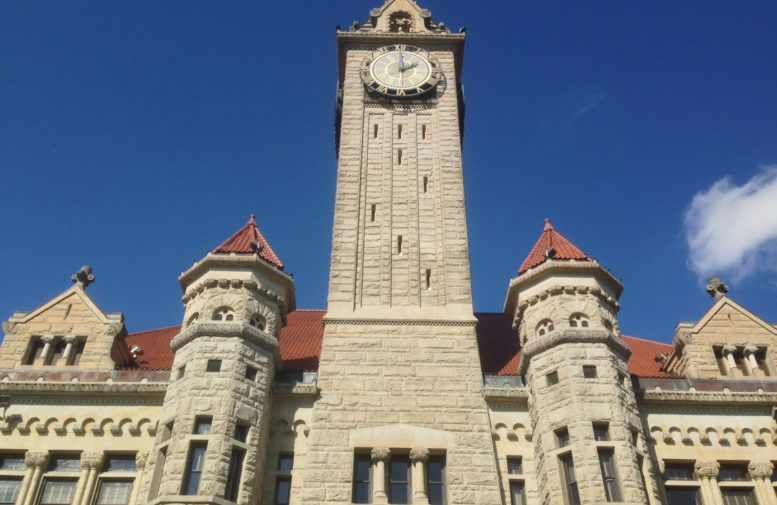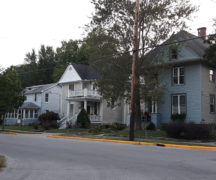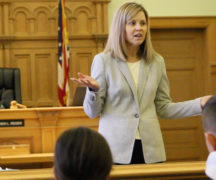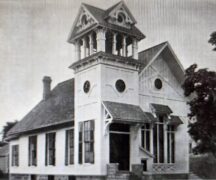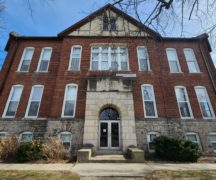By JAN LARSON McLAUGHLIN
BG Independent News
The Bowling Green Historic Preservation Commission hopes to pluck a plum – the Wood County Courthouse – for its cause.
Commission members met with the Wood County Commissioners last week to introduce the idea of the historic courthouse and former jail becoming one of the first properties on the city’s historic site list.
The grand Wood County Courthouse, which is recognized by many as an architectural wonder with ornate stonework, has seen 125 years of trials, political rallies and people coming in to do everyday business – pay taxes, get marriage licenses, attend public meetings.
Ground was broken for the structure in 1893, the cornerstone was laid in 1894, and the building was completed in 1896 for the cost of $255,746.84. The county was in a time of prosperity during the oil boom.
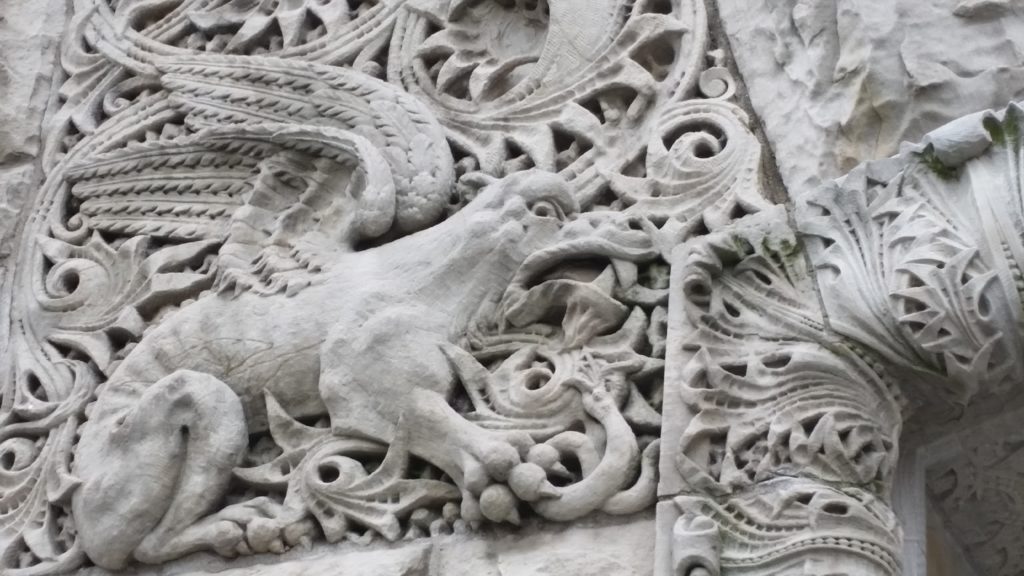
The stately building was made from sandstone sent from Amherst, Ohio, granite from Vermont, and marble from Italy. The intricately carved gargoyles on the exterior and the stained glass panels in the ceiling of the third floor still cause visitors to “ooooh” and “aaaaah.”
When built, the clock tower rising high above Bowling Green boasted clock hands stretching 16 feet – the second largest in America – close behind the 16.5 feet clock hands at the Chronicle newspaper building in San Francisco.
The original clock hands were made of basswood. However, pigeons roosted on them and knocked them out of time, so they soon had to be replaced by metal hands.

The massive murals on the third floor were also not original to the courthouse, but were added later by artist Isaac M. Taylor, who was mayor of Bowling Green in 1910-1911. Taylor painted the working oil fields of the Portage area, and a scene from Fort Meigs in Perrysburg.
The ornate stone carvings – in particular the allegory above the windows on the east side of the building, set a 1890’s moral tone for the courthouse.
The figure in the middle represents the law. To the right is agriculture holding a sheath of grain, and to the left is commerce holding an anvil and gears. The law figure has its hand benevolently on the shoulder of agriculture, but points in a warning manner toward business, appearing to indicate that the law should be gentle with agricultural efforts, but keep a watchful eye on commercial pursuits.
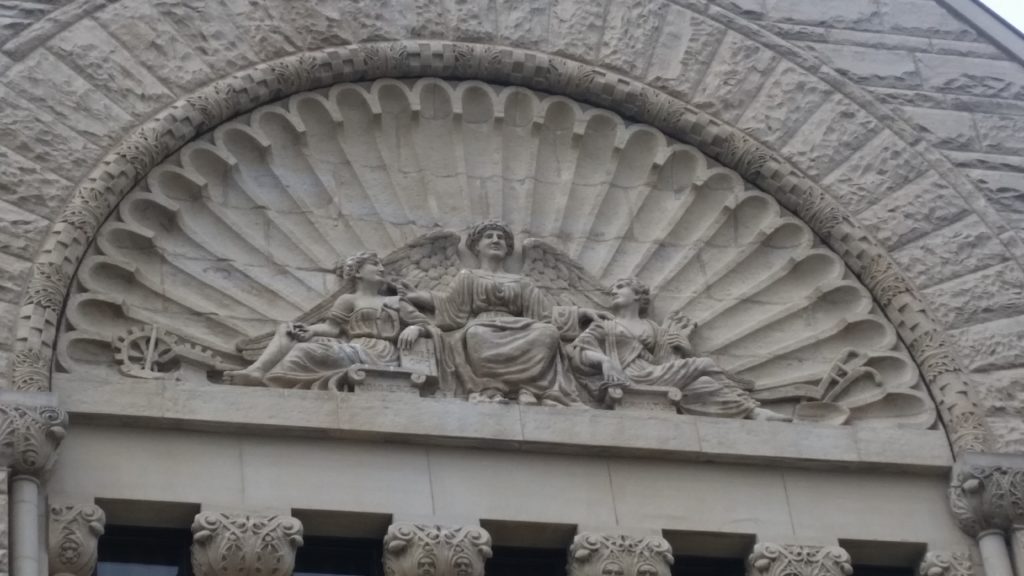
Having the courthouse on its list of historic properties would help set the tone of the city’s preservation effort.
The purpose of the historic preservation commission is to safeguard the heritage of the city, explained John Sampen, president of the commission. That, in turn, will heighten civic pride and property values, plus attract people to live, visit, attend BGSU, and send their children here, he said.
“The historic feel of our city will become a magnet for many,” Sampen said.
The older neighborhoods of the city are unique, not cookie cutter architecture.
“They connect us to our past,” Sampen said.
And once gone, they aren’t coming back.
Les Barber, also a member of the commission, told the county commissioners that 78 cities in Ohio have historic preservation efforts in place. Bowling Green – the only college town without such a program in place – is waiting for National Park Service approval of its status.
The city commission approached the county commissioners because it has been made clear over the years that county officials believe in preserving the history of the courthouse and former jail which is now used as the county records center.
So Barber explained that the city commission wanted to enlist the county as advocates and partners in their quest to preserve historic sites in the city.
If approved, the courthouse would be placed on the local register of historic buildings, and deemed an “historic landmark,” Barber said.
When asked if being on the register would make it a problem to add onto the buildings if necessary, Barber said that it has been clear that the county adheres to historic standards when making changes to the building exterior.
Wood County Administrator Andrew Kalmar agreed.
“The commissioners have been very mindful of the historic nature of the buildings,” he said. “That building has been the same since the day it was built.”
In fact, any time there are modifications – like the addition of the atrium connecting the courthouse, old jail and county office building – the county has used the same stone from the same quarries used for the original construction, Kalmar said.
The city commission members said they would ask the city attorney to draft a memorandum of understanding, and the county commissioners said they would review the document.

